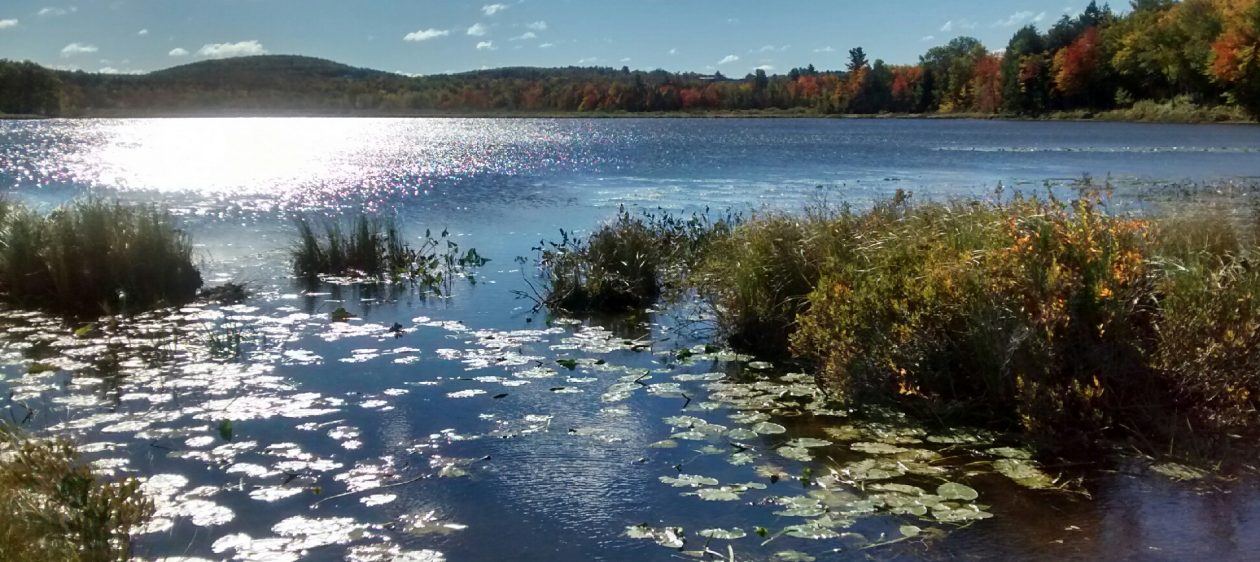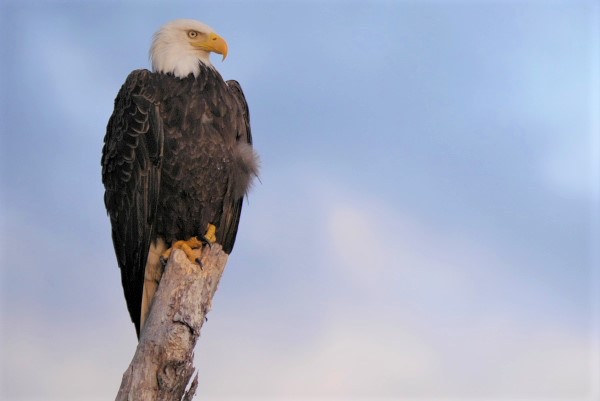
Oneof the best features of living out here in The Basin is ourneighbors. High in the branches of a towering white pine are a pairof bald eagles that watch and entertain us through the seasons.
Anexpedition onto the pond and out onto the river usually produces asighting of these majestic birds. Suddenly we will see them soaroverhead and land in the branches of a tall tree on the oppositeshoreline or on a rocky outcrop where they will post themselves,attentive to any slight movement on the pond. If I am paddling orskiing by, the eagles will launch and curve towards me, letting meknow they are aware of my presence, and then resume their watch.
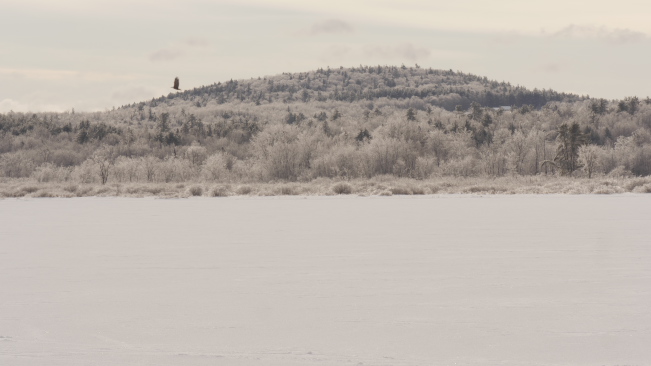
Now, in late February, the pair are courting and nest-building. This rain should help uncover some grasses and broken branches that serve to fortify their nest. In the evening, as we ski home, we see the two perched on a branch, side by side, bonding quietly before their cloacal kiss that will produce hatchlings in April.
For almost four years, we have had the honor of living alongside this pair and watching them parent and teach their fledglings to fly. We listen to their cries and watch them venture out into the huge world. Last year the eaglets were good fliers, but the year before, there were 3 and a little hard to manage. The fledglings would get caught in the canopy of the forest and screech for rescue for hours. The elder would stay nearby, patiently coaching his offspring to get out from under the branches and come towards the shore.
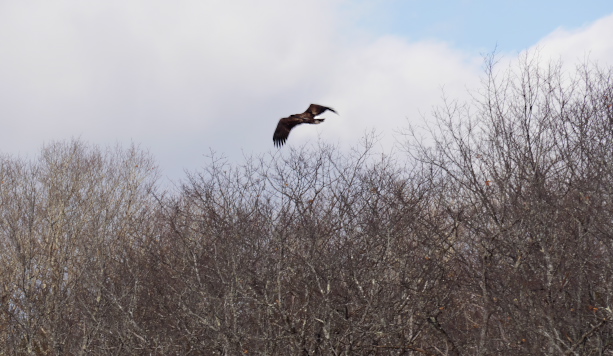
A home that houses four eagles – a parent and three young – is a mighty big nest, or aerie as the nests of raptors are called. Eagle nests in Maine can be up to eight feet across and twenty feet vertically! They can weigh a ton, literally, or even up to two tons! I wondered yesterday if the eagles have beaver-cut sticks in their nest, in addition to foraged broken branches. I’m sure they do, as there is a vast supply of beaver-cut sticks in the area!
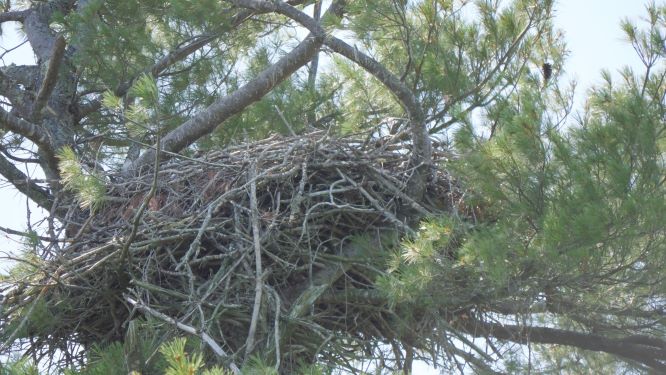
It’s gladdening to know that these adult eagles will return to nest here year after year, and they don’t stray far in the winter months due to fish on the ice left by ice fishermen. One eagle nest in southern Maine was documented to have served three generations of adult eagles for sixty years!
This is a critical time for our pair in the pine. Humans and their noise can be disruptive to courting (no one likes that!) or upset the mother incubating the eggs. While both parents sit on the eggs in the nest, the female does more often, while the male remains a sentinel nearby, prepared to protect his kingdom. We choose to use another route to the pond at this time of year as we don’t want to interrupt this important time in the eagle’s cycle. IFW recommends staying 1000 feet or 300 meters from an active eagle nest. The eagles don’t like motorized vehicles or bicycles and indicate their displeasure by screeching and launching out. They don’t seem to mind skiing or paddling at a distance and will circle around us before heading down the river.
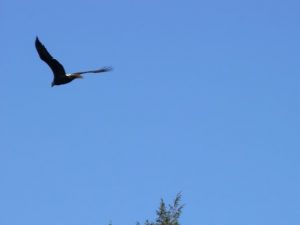
Last year, it was April when I walked down to the pond and saw the eagle high above on a limb. He made a chortling sound, and I heard myself say, “Congratulations!” It wasn’t long before we could spot two gray downy heads peeking out from their fortress, way up in the sky.
Ifyou want to know more about bald eagles in Maine, this is a greatsite with stunning photos:
https://www.maine.gov/ifw/fish-wildlife/wildlife/species-information/birds/bald-eagles.html
Somequick facts can be found at:
https://www.nationaleaglecenter.org/eagle-nesting-young/
AndI really enjoyed BDN Aislinn’s column from 2016 which provided moregreat photos.
